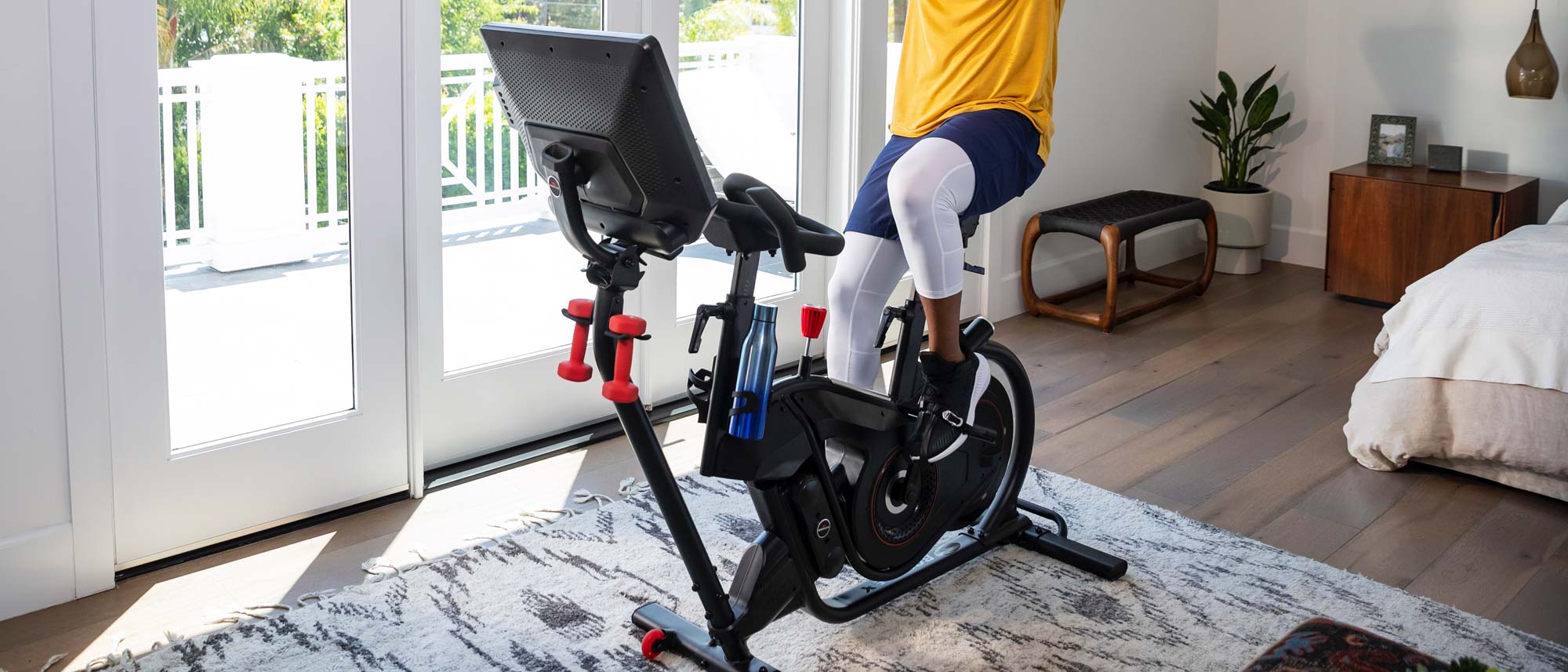Tom's Guide Verdict
A unique lean mode separates the Bowflex Velocore from other exercise bikes, but that’s not the only thing that makes it great.
Pros
- +
Flexible platform (even works with Peloton)
- +
Lean mode makes ride interesting
- +
Subscription is less expensive and not required (after first year)
Cons
- -
Expensive (more expensive than Peloton)
- -
No live classes or leaderboards
- -
Bigger and heavier than competitors
Why you can trust Tom's Guide
Assembled weight: 175 pounds
Pedals: Regular or clip-in (SPD)
Rider size: 4'6" - 6'6"
Max rider weight: 325 pounds
Dimensions: 59.8 x 52.6 x 24.1 inches
For those who feel stationary fitness bikes are too stationary, the Bowflex VeloCore could be the answer. This connected fitness bike that leans from side to side so you feel like you're riding a real bike, instead of just pedaling away in your living room like you have been all year long.
While it’s just as expensive as a Peloton, the Bowflex VeloCore’s unique design and large display makes it a compelling alternative, one of the best exercise bikes around and the best workout machine that’s not a Peloton in the 2021 Tom's Guide Awards for health and fitness tech. Plus, its side-to-side movement will help tone your midsection — if you can stomach its price.
Bowflex Velocore review: Price and subscription costs
The Bowflex VeloCore does look like it's trying to take on the Peloton Bike (but don't all fitness bikes these days?), so if you're looking for a budget-friendly alternative you'll want to look somewhere else. The VeloCore comes with two screen size options, a 16-inch console for $1,699 or a 22-inch console for $2,199. Our review unit sports the 22-inch console, the same screen size found on the original Peloton Bike, which is actually cheaper at $1,895. The screen tilts but doesn't swivel, so if that's a feature you want, then the Peloton Bike+ is still a better option.
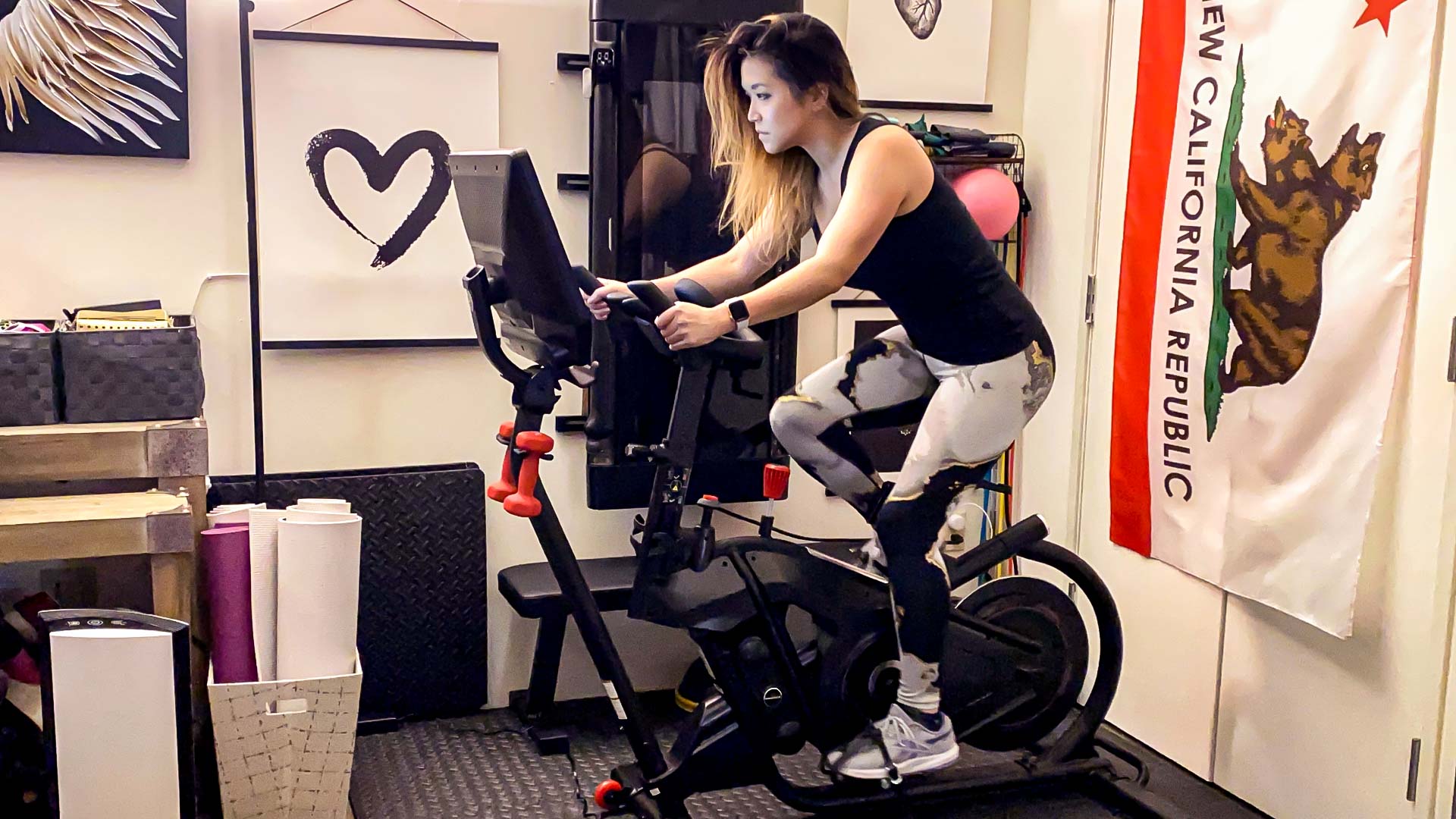
The VeloCore's price includes shipping but does not include assembly, which costs an extra $190 (Peloton's prices includes shipping and assembly). I watched the assembly video and opted for professional assembly, mostly because while it doesn't seem overly difficult, at 175 pounds, it’s heavier and larger than other exercise bikes.
The bike also comes with a pair of 3-pound dumbbells and a Bluetooth heart rate monitoring armband. The accessories are a nice addition, but they're not dealmakers.
You're not just buying a bike, though — you're also buying a service. When you buy the VeloCore you'll need to commit to a minimum of 12 months of Bowflex's subscription-based training platform, JRNY, which costs $19.99/month (after a 2-month free trial) and allows unlimited accounts.
Bowflex Velocore review: Design
At a glance, the VeloCore looks a lot like its competitors: Sleek, matte-black frame, red accents, giant touchscreen on the front. Thanks to its semi-unique "lean mode," the VeloCore has a totally different profile from many of its competitors — the VeloCore is lower and wider, while bikes from Peloton and Echelon are narrower and more upright — but I wouldn't be surprised if someone thought all these connected fitness bikes were made by the same company. That said, I'm pretty sure Bowflex has been rocking a red logo since the 90s.
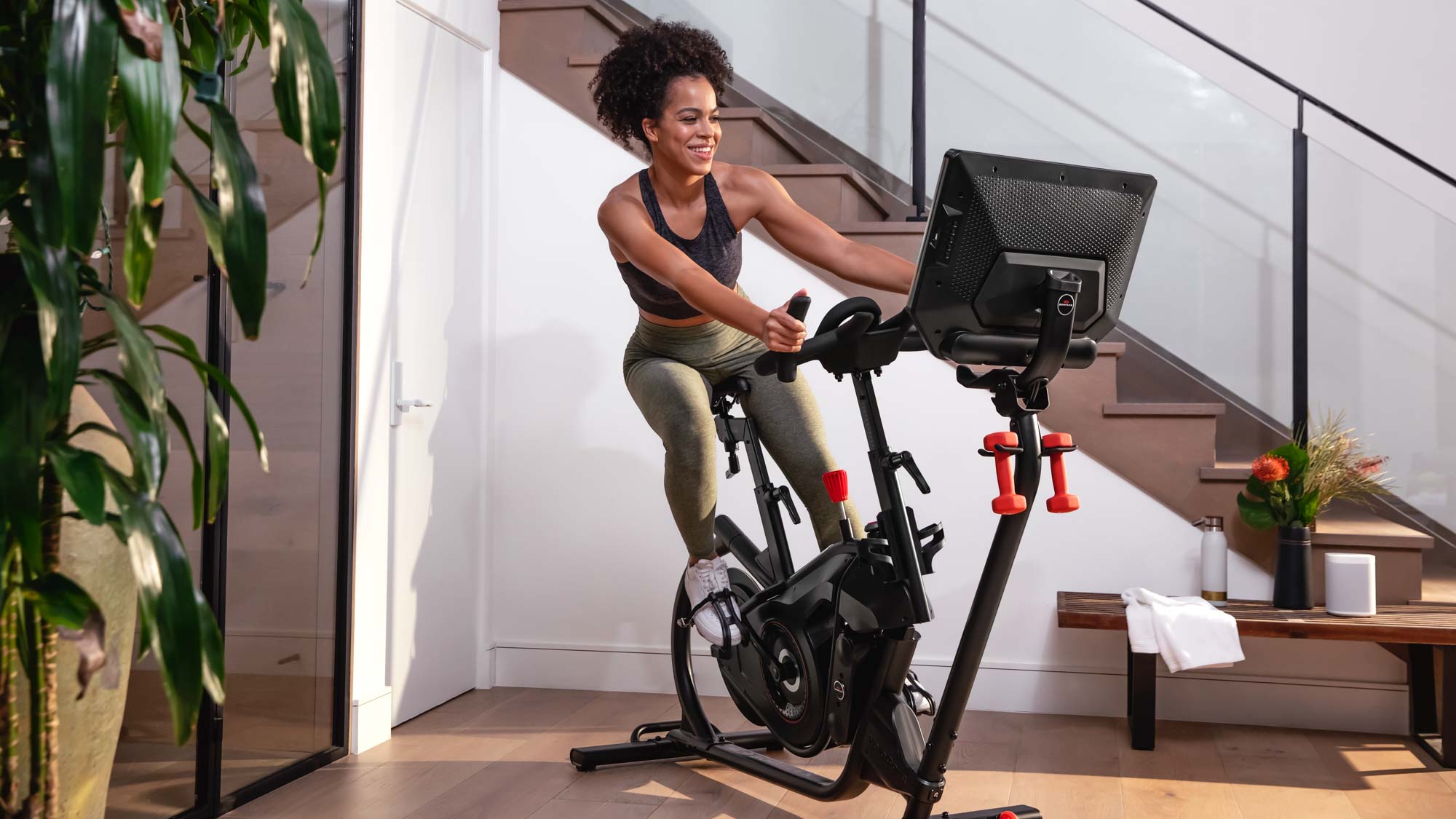
The VeloCore's screen is fantastic. It's big, bright, and pretty easy to use as long as your fingers aren't slippery with sweat. The console tilts but is very sturdy while you're using the bike.
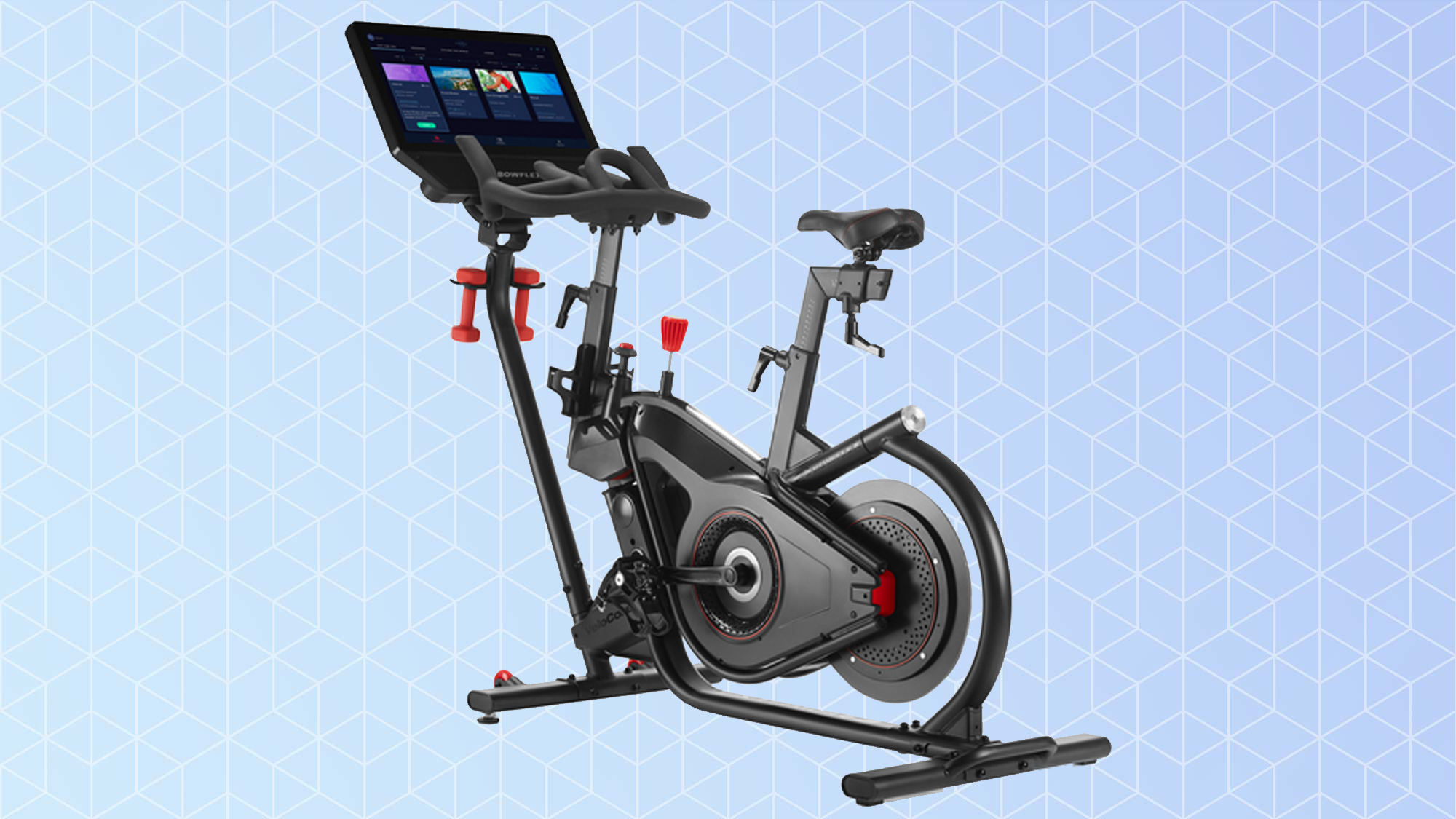
The screen is where you'll see all of your metrics as you ride: Time, distance, calories, burn rate, heart rate, cadence, resistance, and lean rate (if the bike is unlocked). The resistance is displayed as a number (there are 100 levels) but adjusted manually with a knob.
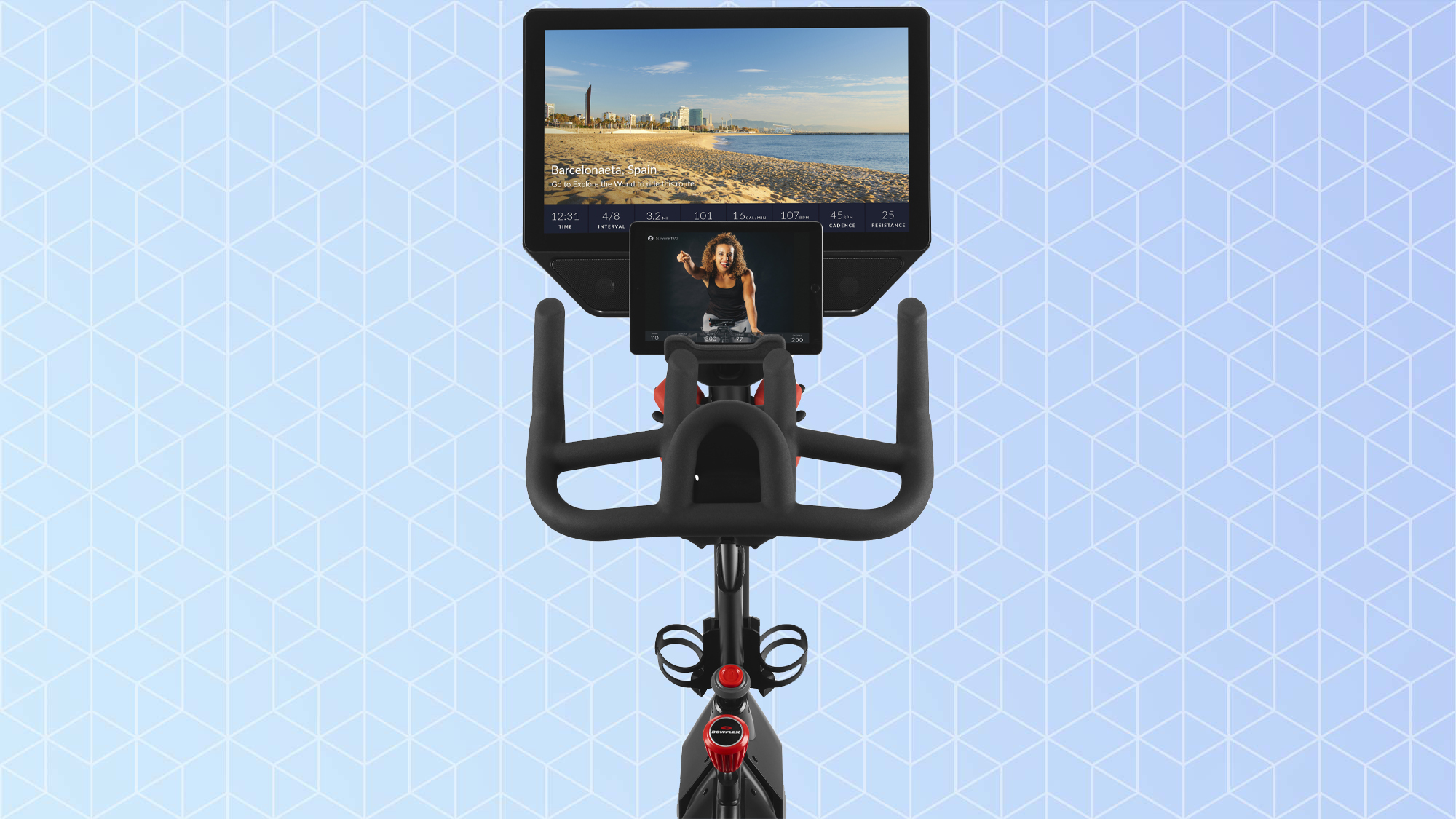
The VeloCore is equipped with dual-sided pedals, so you can use them with regular shoes (one side has adjustable toe-cages) or SPD cleats. I'm glad the bike allows for both options, because I'm the kind of spin-casual who rents shoes, and even if buying a $2,000+ bike means you should probably also invest in some cleats, it's nice to not have to.
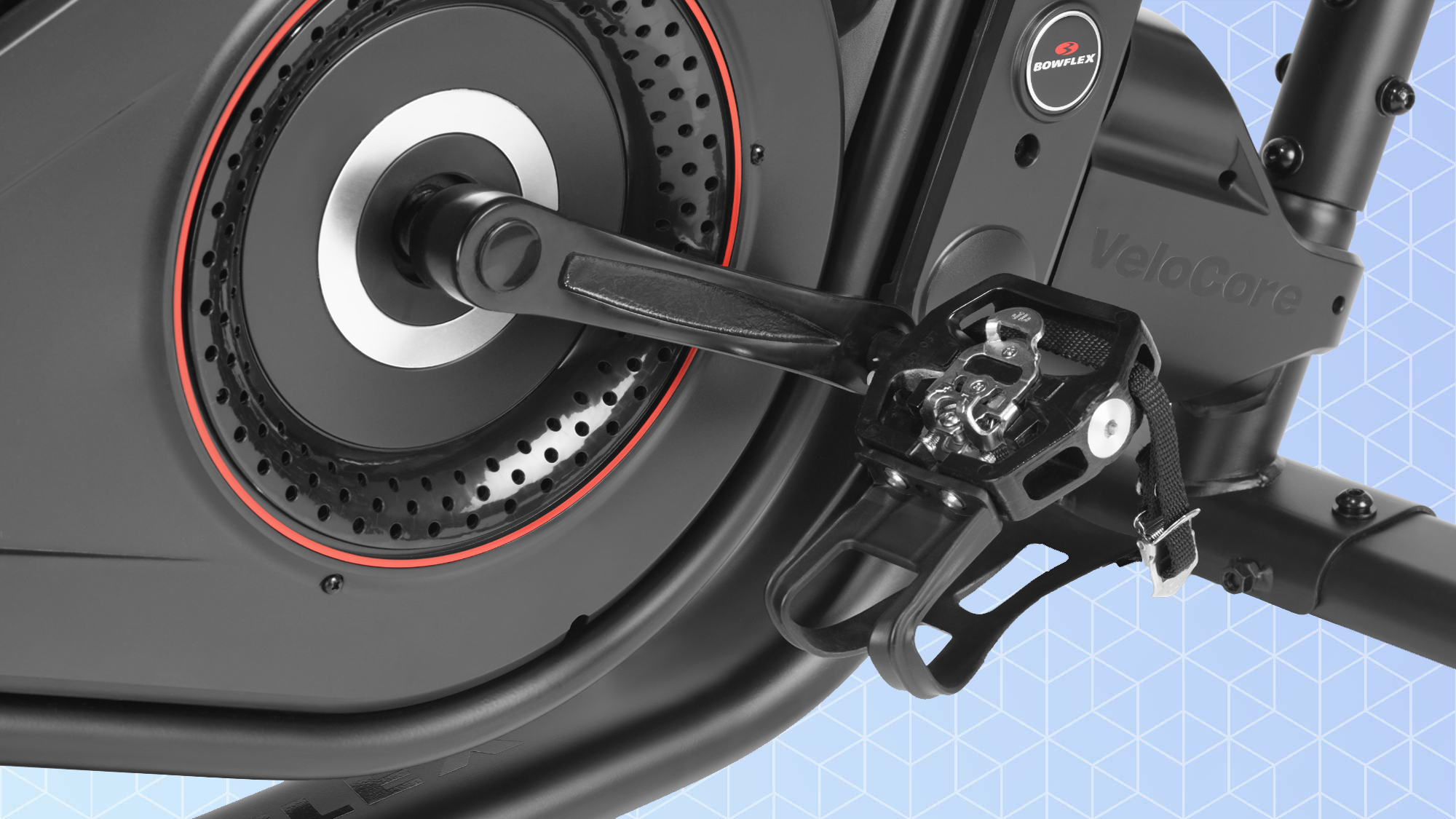
The VeloCore is an impressive piece of equipment even without any of the tech. It's super sturdy and yet all the adjustable areas — the seat, handlebars, and touchscreen angle — are extremely easy to change quickly. The VeloCore's seat is, frankly, faster and easier to adjust than the driver's seat in my car. The VeloCore has plenty of places to stick things — there's a phone holder under the multi-grip handlebars, a tablet stand near the bottom of the console, two water bottle holders, and built-in dumbbell hooks for the included 3-pound dumbbells.
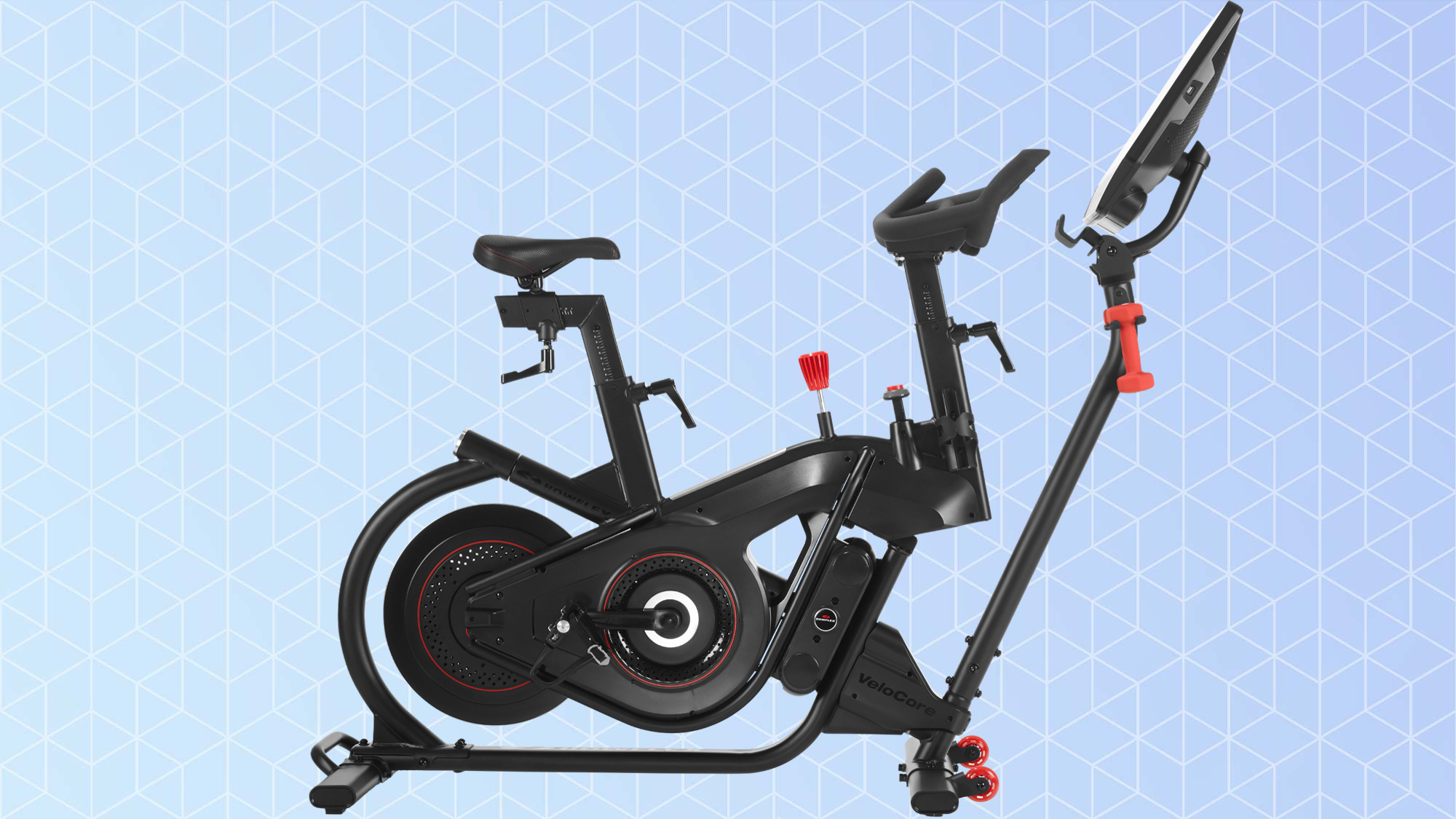
While the VeloCore has a footprint of about 60 inches long by 24 inches wide, you'll need an area that's at least 50 inches wide to use the bike's lean mode. The tallest point of the bike is the touchscreen, which is 55.3 inches tall with the 22-inch screen and 52.6 inches tall with the 16-inch screen. The bike has two small transport wheels on the front and a handle on the back (which is very helpful — a lot of fitness bikes don't have handles), so once it's assembled it's actually pretty easy to move around.
Bowflex Velocore review: Lean mode
The VeloCore's biggest selling point is its leaning mode, which causes the bike to sway from side to side as you ride. Why do you want this? According to Bowflex, it's a more natural-feeling, immersive ride, plus the lack of stability forces you to engage your core, and the added dimension makes for a much more intense workout. If this sounds a little gimmicky, that's because it is a little gimmicky. But that doesn't mean I don't like it.
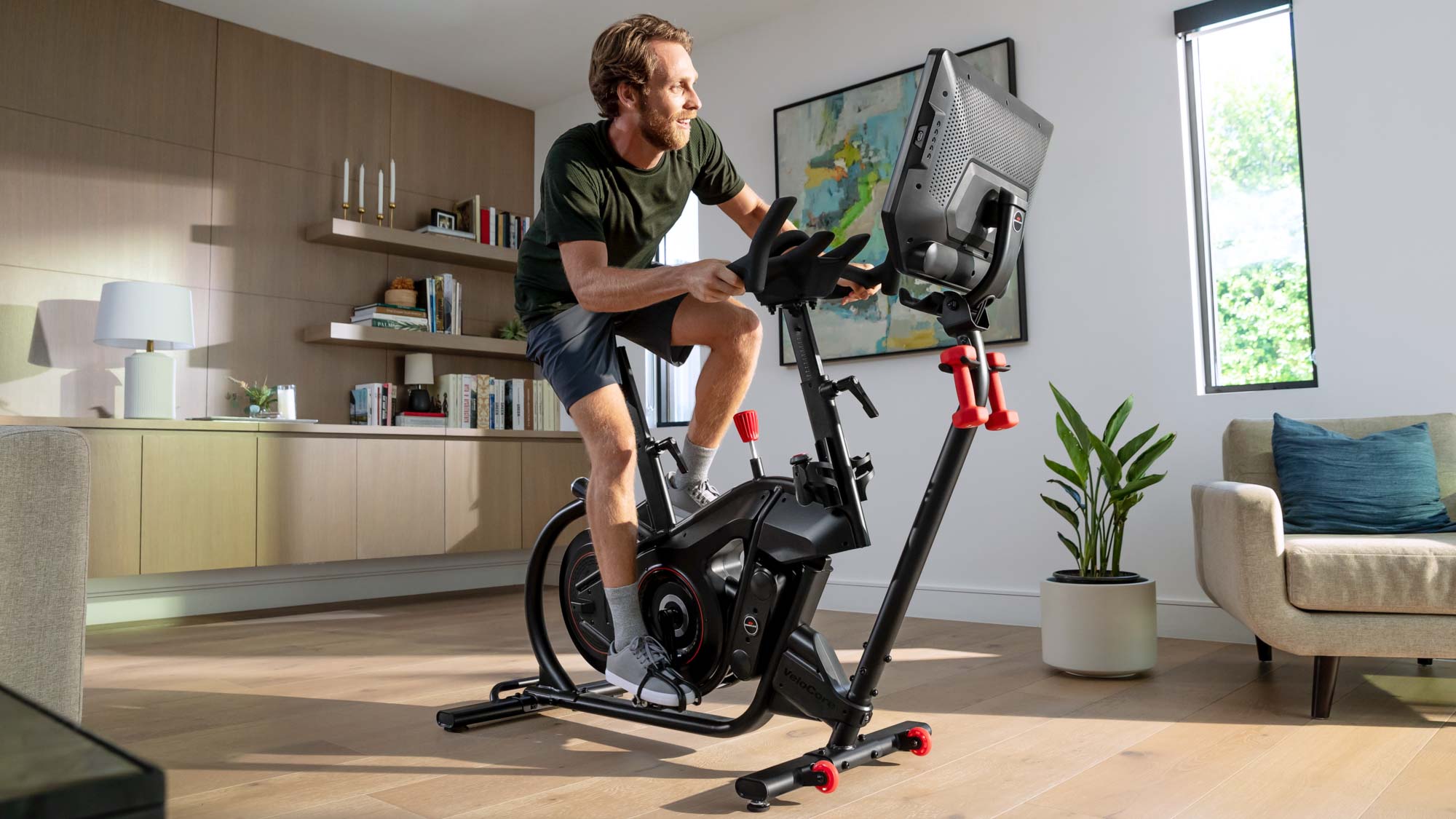
The VeloCore can be used in either upright (locked) mode or lean mode. There's a locking knob on the crossbar, just above the resistance knob — push it down with an open palm to unlock the bike and enable lean mode; pull it up to lock the bike in its normal upright position. It's very easy to lock and unlock, even in the middle of a workout, so you can swap between modes whenever you want.
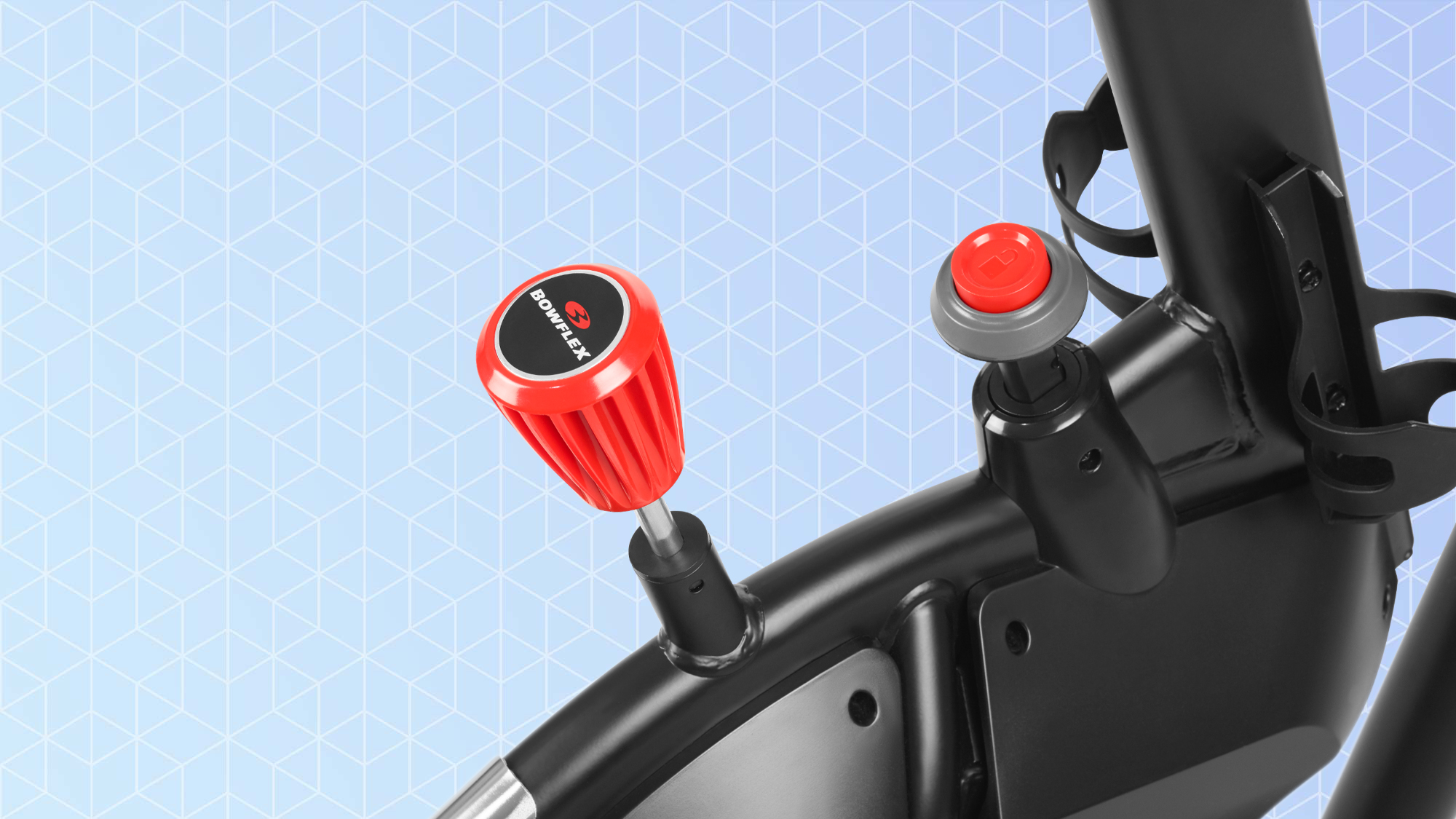
There's another leaning fitness bike company, RealRyder, which has been around for about a decade, so this isn't particularly revolutionary technology, but the VeloCore is the only connected bike with this feature.
JRNY has several workouts that incorporate lean mode, but lean mode was most interesting to me in unguided workouts — when I was doing scenic rides or watching TV. My main weakness with cardio is boredom, but the extra swaying movement made the rides much more interesting and engaging — and yes, immersive, even though I wasn't leaning with the curves. Leaning rides definitely had a completely different vibe from standard upright workouts, enough so that I felt like I was using multiple machines.
While the lean mode does make riding seem slightly more natural, it's definitely not the same as riding a bike on a road. The bike sways much more than you'd be swaying on a normal bike, especially when you're doing things like hill workouts — enough so that it definitely seems like it would pose an injury risk for people with weak joints (i.e. knees). But this isn't a concern as long as you're not trying to do every workout in lean mode.
Bowflex Velocore review: Coaching and training programs
JRNY's content falls into three categories: Adaptive workouts led by a virtual coach, streaming on-demand workouts led by trainers, and scenic rides through a number of cities, parks, and other destinations around the world. There are also off-bike workouts on JRNY's app, but this section feels a little like an afterthought.
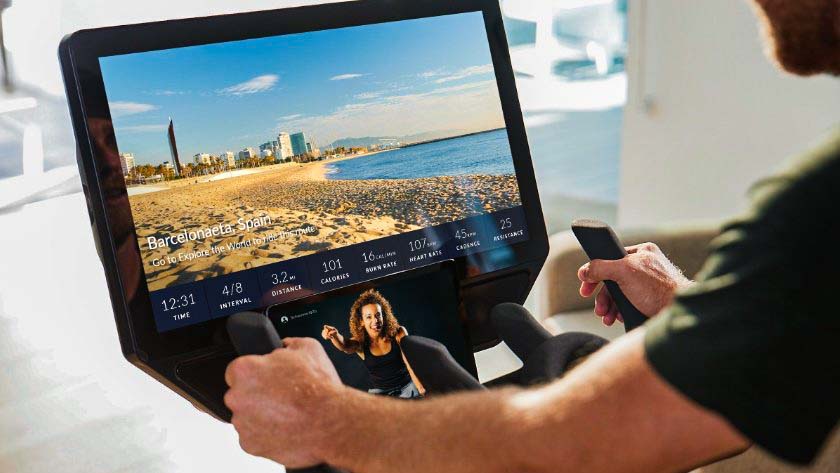
It’s all well-made and easy to follow, and the trainers are engaging and inspiring, but it's not too different from the content on a lot of other platforms — and it's definitely not going to inspire a rabid fanbase the way Peloton's or SoulCycle's content does. While JRNY does offer some interactive content with its adaptive workouts, the platform doesn't currently offer live classes or competitive features such as leaderboards. There's no shortage of quality content — but content quality isn't what inspires you to actually start a workout. Live classes offer a degree of accountability and variance that you just can't get in on-demand videos.
While Bowflex doesn't currently offer live classes, its platform is surprisingly flexible. With a JRNY subscription you can stream videos from several third-party streaming services, including Netflix, Hulu, Amazon Prime Video, and Disney+ (with valid credentials). This might sound trivial, but it's a feature found on surprisingly few connected fitness bikes — not even Peloton has this yet. It seems like a waste to have a big, built-in screen and not be able to use it for anything other than workouts. JRNY also lets you connect the VeloCore to third-party training apps — including Peloton, though you won’t be included in the live class leaderboards, and only your cadence will sync with the app.
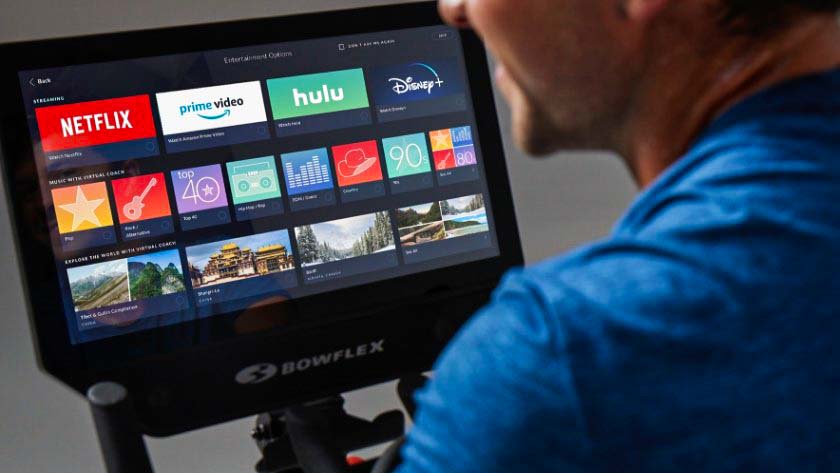
JRNY's platform is also adaptive in other ways: It curates a list of workouts for each user based on performance, workout style, and preferences (you can rate each workout, even if you stop halfway through). The platform does a pretty good job of learning your own workout style; I prefer short, high-intensity workouts and the app mostly shows me 15-minute workouts.
You don't have to follow the app's suggested list; you can pick any workout from the app's library, which is broadly sorted into difficulty levels and can be filtered by length. The library isn't enormous, but it's large enough that I want more filtering options — I'd love to be able to find workouts that utilize the bike's leaning mode, for example. The workout library is definitely modest compared to something like Peloton, but it's big enough — I've been using the bike for a month and I still feel like there are new-to-me options to pick from.
What is nice is that you can choose your own music while riding. JRNY has a built-in streaming service called Bowflex Radio, which has a bunch of genre-based playlists with current music; the selection is somewhat limited (no classical, said my husband — the only person who works out to classical music), but I liked all the playlists I chose. The VeloCore's speakers are below the screen and sound great; my only minor issue was fiddling with the volume, which is sort of a hassle on a touchscreen while you're trying to work out. The console does have physical buttons, including volume controls, on the back of the display, but they're not labeled — actually, I didn't even notice they were there until I'd been using the bike for two weeks. Once you memorize those buttons it's a little easier, but it's not exactly super-intuitive.
Bowflex Velocore review: Verdict
The VeloCore is an excellent exercise bike — no gimmicks necessary. It has one of the most versatile consoles out there, offering several options, including free workouts and scenic rides, to choose from should you decide not to subscribe to JRNY.
But the VeloCore's locking feature is actually why I can recommend it: Lean mode is neat, and it keeps things interesting, but it's not something I'd want to have to do most bike workouts, especially not the more strength-oriented spin workouts, in.
It ultimately comes down to what motivates you: If you really want to be part of the Peloton community, the VeloCore can't really replace what you'd get with a Peloton Bike. But if you need variety and flexibility (or if you have multiple people with different workout styles in your household), the VeloCore is a much better option and gives you way more bang for your buck.
Sarah is a hardware enthusiast and geeky dilettante who has been building computers since she discovered it was easier to move them across the world — she grew up in Tokyo — if they were in pieces. She's currently senior editor at our sister site Tom's Hardware and is best-known for trying to justify ridiculous multi-monitor setups, dramatically lowering the temperature of her entire apartment to cool overheating components, typing just to hear the sound of her keyboard, and playing video games all day "for work." She's written about everything from tech to fitness to sex and relationships, and you can find more of her work in PCWorld, Macworld, TechHive, CNET, Gizmodo, PC Gamer, Men's Health, Men's Fitness, SHAPE, Cosmopolitan, and just about everywhere else. In addition to hardware, she also loves working out, public libraries, marine biology, word games, and salads. Her favorite Star Wars character is a toss-up between the Sarlacc and Jabba the Hutt.
